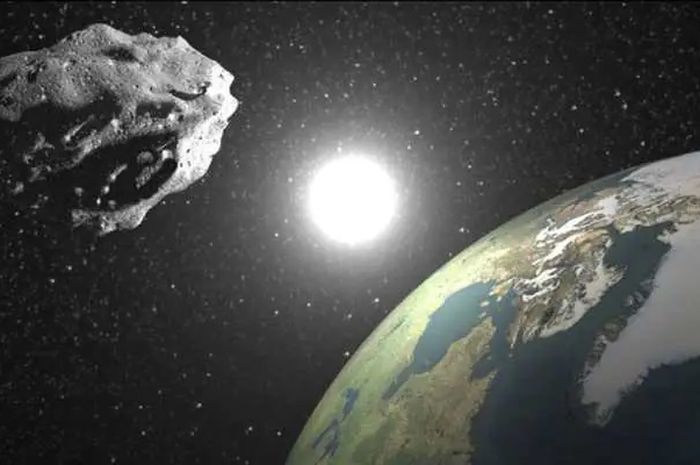–
Artist’s impression of the motion of an asteroid approaching Earth. On March 11, 2022, an asteroid hit Earth, which astronomers detected two hours earlier.
–
Nationalgeographic.co.id—a asteroid small crash Earth on March 11, 2022. This collision occurred just two hours after the para astronomer detected the asteroid for the first time.
Asteroid collision with Earth has created an explosion in the atmosphere above the North Pole. However, this small asteroid is harmless and the impact of the collision is not significant for human life.
The space rock, named 2022 EB5, was first detected at around 1920 GMT at the Piszkéstető Station Observatory in Hungary. The first person to see it was Krisztián Sárneczky, astronomer at the Konkoly Observatory in Budapest.
Other astronomers were then able to track it before the asteroid crashed through the sky to the northeast Iceland just after 21:20 GMT. This asteroid is one of only five asteroids discovered and observed before hitting Earth.
“The very rapid spread of information from the discoverers allowed other astronomers to make more observations from different vantage points with sufficient time to calculate the exact orbit and intersection with Earth,” said Mark Bosloughan asteroid impact specialist at the University of New Mexico, as reported by New Scientist.
Fortunately, the asteroid is small enough to pose little danger. Interim estimates from astronomers, the width of the asteroid is only about 1 to 2 meters.
“An impact of this size can be considered completely harmless. Asteroids of this kind usually create what is called an ‘air burst’ at an altitude of about 40 kilometers above the ground,” said Richard Moissl at the Planetary Defense Office of the European Space Agency (ESA).
The sign of the asteroid’s crash was picked up by infrasound monitoring stations listening for pressure waves from a nuclear weapons test. Peter Brown of Western University in Ontario, Canada, who is an expert in interpreting the data, tweeted that the energy released by the exploding space rock could have been equivalent to about 2 kilotons of TNT.
In comparison, as reported IFL Science, the force of the largest accidental non-nuclear explosion in history, the Halifax explosion, was equivalent to 2.9 kilotons of TNT. This suggests the asteroid most likely hit the nearby ocean.
Also Read: Astronomers Confirm Asteroid 1 Kilometer Diameter In Earth Orbit
PROMOTED CONTENT
Featured Videos
–


